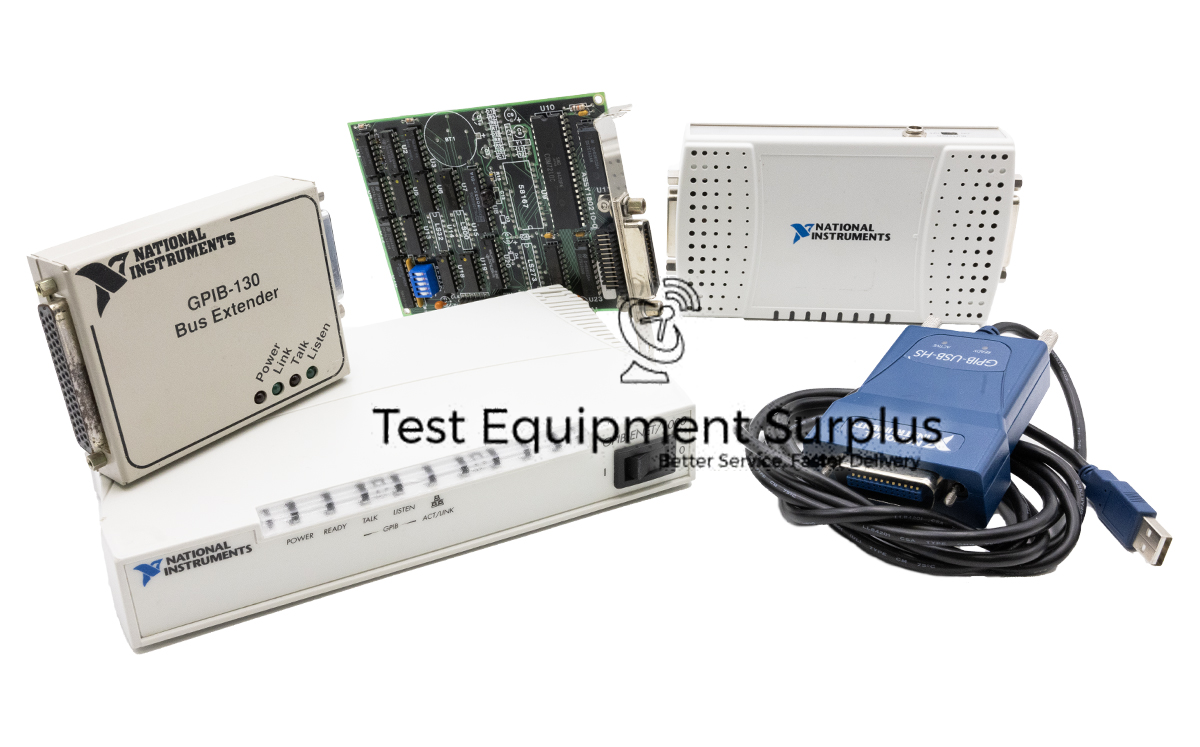Description
The National Instruments GPIB-140A/2 GPIB Extender is a crucial component of the National Instruments GPIB-140A Series, designed to overcome the IEEE 488 standard’s limitation which restricts cable length to 20 meters without an extender. By enabling an extension of up to 2 kilometers, this device significantly expands the operational range of GPIB systems.
With the capacity to support up to 28 devices per system, the GPIB-140A/2 facilitates larger and more complex system configurations beyond the typical 15 devices allowed by the IEEE 488 standard. Users can choose between buffered and unbuffered modes for data transmission, depending on their requirements for speed and data integrity.
By default, the device is set to operate in unbuffered mode, ensuring accurate data exchanges, but it can be easily reconfigured using the DIP switches provided on the GPIB-140A/2 unit. This flexibility in configuration, combined with the use of a fiber-optic cable communication protocol, makes the NI GPIB-140A/2 a versatile solution for extending GPIB networks.
The extender’s part numbers include 777998-01, 777998-02, 777998-03, 777998-04, 777998-05, and 777998-06, ensuring compatibility with a range of setups and user needs.
| Specification | Detail |
|---|---|
| Product Name | National Instruments GPIB-140A/2 GPIB Extender |
| Part Numbers | 777998-01, 777998-02, 777998-03, 777998-04, 777998-05, 777998-06 |
| Series | National Instruments GPIB-140A Series |
| Extension Length | Up to 2 km |
| IEEE 488 Standard Limitation | 20 m without extender |
| Maximum Devices Supported | 28 devices per system |
| Transmission Modes | Buffered mode, Unbuffered mode |
| Default Configuration | Unbuffered mode |
| Configuration Method | DIP switches on the GPIB-140A/2 |
| Communication Protocol | Fiber-optic cable communication |
Question 1: How does the choice between buffered and unbuffered modes on the National Instruments GPIB-140A/2 GPIB Extender affect data transmission requirements?
Answer 1: The choice between buffered and unbuffered modes on the National Instruments GPIB-140A/2 GPIB Extender affects data transmission requirements by allowing users to prioritize between speed and data integrity, with buffered mode offering faster data transmission and unbuffered mode ensuring more accurate data exchanges.
Question 2: How does the National Instruments GPIB-140A/2 GPIB Extender enhance the capabilities of GPIB systems in terms of operational range and the number of devices it can support?
Answer 2: The National Instruments GPIB-140A/2 GPIB Extender supports larger and more complex system configurations by allowing up to 28 devices per system, surpassing the standard IEEE 488 limit of 15 devices, and offers versatility through its ability to extend operational range up to 2 kilometers, the option to switch between buffered and unbuffered modes using DIP switches, and the utilization of fiber-optic cable communication for extended GPIB network configurations.
Question 3: How does the National Instruments GPIB-140A/2 GPIB Extender expand the operational range of GPIB systems, and what features does it offer to support larger and more complex configurations?
Answer 3: The National Instruments GPIB-140A/2 GPIB Extender enhances the operational range of GPIB networks by allowing cable extensions up to 2 kilometers and supports up to 28 devices per system, offering the flexibility of buffered and unbuffered modes for data transmission, which can be configured using DIP switches, thus overcoming the IEEE 488 standard limitations of a 20-meter cable length and a maximum of 15 devices.
Question 4: What capabilities does the National Instruments GPIB-140A/2 GPIB Extender provide to enhance the operational range and system configurations of GPIB networks beyond IEEE 488 standard limitations?
Answer 4: The National Instruments GPIB-140A/2 GPIB Extender expands the operational range of GPIB systems by enabling an extension of the cable length up to 2 kilometers, thereby surpassing the IEEE 488 standard’s 20-meter limitation, and it offers features such as the support of up to 28 devices per system, a choice between buffered and unbuffered modes for data transmission, and the ability to easily switch modes using DIP switches, all of which support larger and more complex
Question 5: How does the National Instruments GPIB-140A/2 GPIB Extender support larger and more complex system configurations, and what features make it a versatile solution for extending GPIB networks?
Answer 5: The National Instruments GPIB-140A/2 GPIB Extender enhances the capabilities of GPIB systems by enabling an extension of the operational range up to 2 kilometers and supporting up to 28 devices per system, which exceeds the IEEE 488 standard’s typical maximum of 15 devices and 20-meter cable length without an extender.



